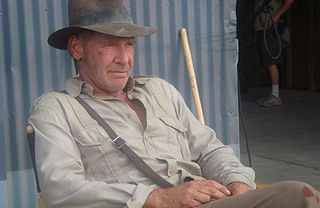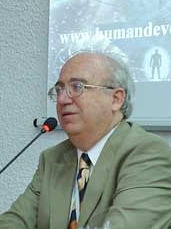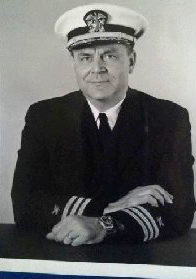Related Research Articles

Dr. Henry Walton "Indiana" Jones, Jr., also known simply by the nickname Indy, is the title character and protagonist of the Indiana Jones franchise. George Lucas created the character in homage to the action heroes of 1930s film serials. The character first appeared in the 1981 film Raiders of the Lost Ark, to be followed by Indiana Jones and the Temple of Doom in 1984, Indiana Jones and the Last Crusade in 1989, The Young Indiana Jones Chronicles from 1992 to 1996, Indiana Jones and the Kingdom of the Crystal Skull in 2008, and Indiana Jones and the Dial of Destiny in 2023. The character is also featured in novels, comics, video games, and other media. Jones is also the inspiration for several Disney theme park attractions, including Indiana Jones et le Temple du Péril, the Indiana Jones Adventure, and Epic Stunt Spectacular! attractions.

The Town of Union is located in Door County, Wisconsin, United States. The population was 880 at the 2000 census. The unincorporated communities of Shoemaker Point and Namur are located in the town.

Industrial archaeology (IA) is the systematic study of material evidence associated with the industrial past. This evidence, collectively referred to as industrial heritage, includes buildings, machinery, artifacts, sites, infrastructure, documents and other items associated with the production, manufacture, extraction, transport or construction of a product or range of products. The field of industrial archaeology incorporates a range of disciplines including archaeology, architecture, construction, engineering, historic preservation, museology, technology, urban planning and other specialties, in order to piece together the history of past industrial activities. The scientific interpretation of material evidence is often necessary, as the written record of many industrial techniques is often incomplete or nonexistent. Industrial archaeology includes both the examination of standing structures and sites that must be studied by an excavation.

The United Monarchy or the United Kingdom of Israel is a theorized political entity based on the descriptions in the deuteronomistic history of the Hebrew Bible as having existed under the reigns of Saul, David, and Solomon, encompassing the territories of both the later kingdoms of Judah and Israel.

Paleo-Indians, Paleoindians or Paleo-Americans were the first peoples who entered, and subsequently inhabited, the Americas during the final glacial episodes of the late Pleistocene period. The prefix paleo- comes from the Ancient Greek adjective: παλαιός, romanized: palaiós, lit. 'old; ancient'. The term Paleo-Indians applies specifically to the lithic period in the Western Hemisphere and is distinct from the term Paleolithic.

Ṣīr Banī Yās is a natural island located 170 km (110 mi) southwest of Abu Dhabi, the capital of the United Arab Emirates. It lies 9 km (5.6 mi) offshore from Jebel Dhanna, which serves as a crossing point to other islands such as Dalma. Sir Bani Yas is 17.5 km (10.9 mi) from north to south and 9 km (5.6 mi) from east to west, making it the largest natural island in the United Arab Emirates. Located just off the shore of the western region of Abu Dhabi, Sir Bani Yas was originally home to Arabia's largest wildlife reserve. Spanning over 87 km2 (34 sq mi), the reserve was established in 1977 by Sheikh Zayed Bin Sultan Al Nahyan. Due to decades of conservation work and ecological investment, it is now home to thousands of large free-roaming animals and several million trees and plants. A bird sanctuary as well as a wildlife reserve, Sir Bani Yas showcases nature through activities such as adventure safaris, kayaking, mountain biking, archery, hiking and snorkeling.
David Hatcher Childress is a French-born American author, and the owner of Adventures Unlimited Press, a publishing house established in 1984 specializing in books on unusual topics such as ancient mysteries, unexplained phenomena, pseudohistory, and historical revisionism. His own works primarily concentrate on pseudoarchaeological and pseudoscientific topics such as "UFOs, secret societies, suppressed technology, cryptozoology [and] conspiracy theory." Childress, having no degree, refers to himself as a "rogue archaeologist".

George Fletcher Bass was an American archaeologist. An early practitioner of underwater archaeology, he co-directed the first expedition to entirely excavate an ancient shipwreck at Cape Gelidonya in 1960 and founded the Institute of Nautical Archaeology in 1972.

George Robert Fischer was an American underwater archaeologist, considered the founding father of the field in the National Park Service. A native Californian, he did undergraduate and graduate work at Stanford University, and began his career with the National Park Service in 1959, which included assignments in six parks, the Washington, D.C. Office, and the Southeast Archaeological Center from which he retired in 1988. He began teaching courses in underwater archaeology at Florida State University in 1974 and co-instructed inter-disciplinary courses in scientific diving techniques. After retirement from the NPS his FSU activities were expanded and his assistance helped shape the university's program in underwater archaeology.
The Biblical Archaeology Society was established in 1974 by American lawyer Hershel Shanks, as a non-sectarian organisation that supports and promotes biblical archaeology. Its current publications include the Biblical Archaeology Review, whilst previously circulating the Bible Review (1985–2005) and Archaeology Odyssey (1998–2006). The Biblical Archaeology Society also publishes books about biblical archaeology aimed at a general readership. The Society has, for more than 45 years, run seminars and tours offering an opportunity to learn directly from world-renowned archaeologists and scholars. It also produced videos (DVD) and CDs on archaeology and biblical archaeology.

The Marmes Rockshelter is an archaeological site first excavated in 1962, near Lyons Ferry Park and the confluence of the Snake and Palouse Rivers, in Franklin County, southeastern Washington. This rockshelter is remarkable in the level of preservation of organic materials, the depth of stratified deposits, and the apparent age of the associated Native American human remains. The site was discovered on the property of Roland Marmes, and was the site of the oldest human remains in North America at that time. In 1966, the site became, along with Chinook Point and the American and English Camps on San Juan Island, the first National Historic Landmarks listed in Washington. In 1969, the site was submerged in water when a levee protecting it from waters rising behind the then newly constructed Lower Monumental Dam, which was 20 miles (32 km) down the Snake River, failed to hold back water that leaked into the protected area through gravel under the soil, creating Lake Herbert G. West.
Michael Alexander Arbuthnot is an archaeologist, instructor and archaeological filmmaker.

Michael A. Cremo, also known by his devotional name Drutakarmā dāsa, is an American freelance researcher who describes himself as a Vedic creationist and an "alternative archeologist." He argues that humans have lived on Earth for millions of years. Based on artifacts allegedly found in the Eocene auriferous gravels of Table Mountain, California and discussed in his book Forbidden Archeology, Cremo argues for the existence of modern humans on Earth as early as 30 to 40 million years ago. Forbidden Archeology, which he wrote with Richard L. Thompson, has attracted criticism from mainstream scholars, who describe it as pseudoscientific.

Archaeology or archeology is the study of human activity through the recovery and analysis of material culture. The archaeological record consists of artifacts, architecture, biofacts or ecofacts, sites, and cultural landscapes. Archaeology can be considered both a social science and a branch of the humanities. It is usually considered an independent academic discipline, but may also be classified as part of anthropology, history or geography.
Bodo is a hamlet in central Alberta, Canada within the Municipal District of Provost No. 52. It is located approximately 23 kilometres (14 mi) south of Highway 13 and 25 km (16 mi) southeast of Provost. The community was named after Bodø, Norway.
The Pluckemin Continental Artillery Cantonment Site in Pluckemin, New Jersey, at the southern section of Bedminster Township, New Jersey, holds historic American Revolutionary War importance as the Continental Army's artillery winter cantonment during the winter of 1778–79. It was nestled on the western side of the Second Watchung Mountain just to the North of the village of Pluckemin. The major significance of the site lies with the very different picture it yields of military organization during the Revolutionary War, although some point to it as the birthplace of the American military academy, 24 years prior to the founding of the United States Military Academy at West Point.
Software archaeology or source code archeology is the study of poorly documented or undocumented legacy software implementations, as part of software maintenance. Software archaeology, named by analogy with archaeology, includes the reverse engineering of software modules, and the application of a variety of tools and processes for extracting and understanding program structure and recovering design information. Software archaeology may reveal dysfunctional team processes which have produced poorly designed or even unused software modules, and in some cases deliberately obfuscatory code may be found. The term has been in use for decades.

Mendel L. Peterson was an American pioneer in the field of underwater archeology and former curator at the Smithsonian Institution, becoming known as "the father of underwater archeology". His specialties included underwater exploration and numismatics. Peterson Island in Antarctica is named after him.
María del Pilar Luna Erreguerena was a Mexican underwater archaeologist, pioneer in the field of archaeology, who founded the Division of Underwater Archaeology of the National Institute of Anthropology and History (INAH). She was awarded her undergraduate degree by the National School of Anthropology and History and the National Autonomous University of Mexico (UNAM), from which she then obtained her master's degree in Anthropological Sciences.
Valerie Olson van Heest is an American author, explorer, and museum exhibit designer. She is co-founder of the Michigan Shipwreck Research Association.
References
- ↑ "Human Prehistory and the First Civilizations". thegreatcourses.com.au. Retrieved 9 February 2014.
- ↑ "Beyond the Blue Horizon". bradshawfoundation.com. Retrieved 9 February 2014.
- ↑ The Adventure of Archaeology. librarything.com. Retrieved 9 February 2014.